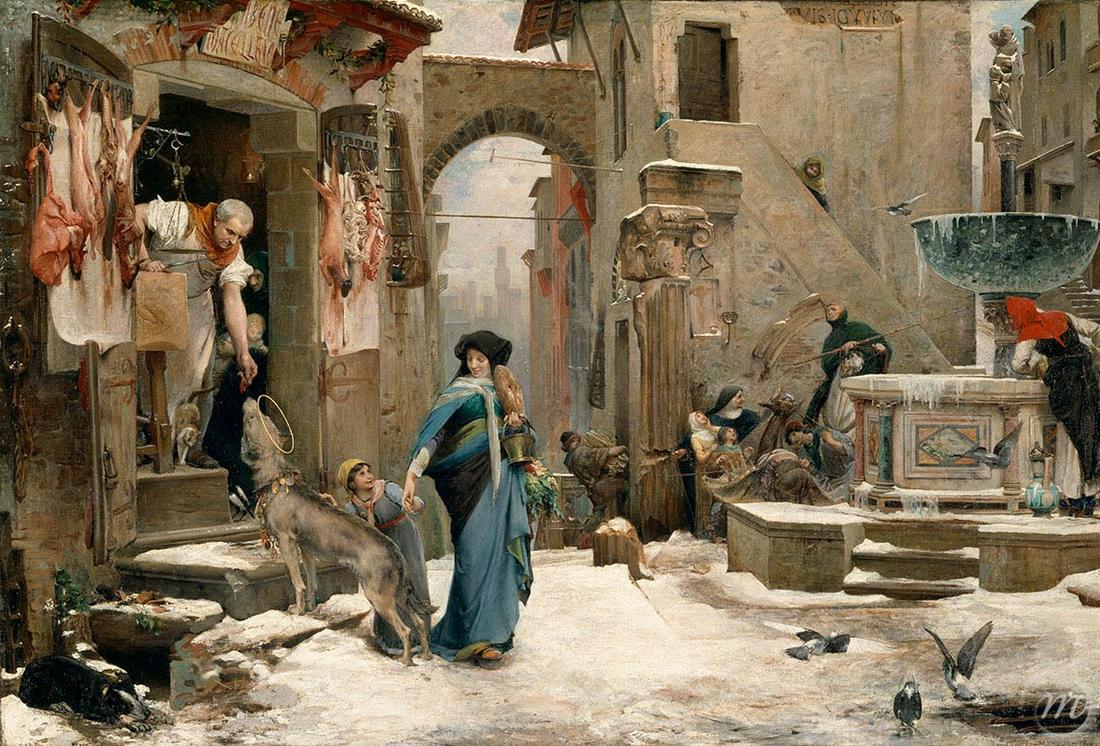“The wolf lived in Agubbio for two years, entering its houses as a friend, from one door to the next, without harming anyone or being harmed itself; and it was willingly fed by the inhabitants; and as it passed through the countryside and into these houses, no dog ever barked at it.” This story is told in an anonymous collection from the 14th century. It’s linked to the legend of Saint Francis of Assisi.
In this painting by Merson, we see the famous wolf at the butcher's door, a collar of amulets around its neck and wearing a halo, delicately grasping a piece of meat in its mouth. A little girl strokes it, under the tender, understanding gaze of her mother. Around them, village life carries on peacefully. Near the marble fountain, several locals witness the scene. Only the two merchants, including the figure in green mounted on a prancing horse, show their disbelief.
The attention to detail supports the picturesque nature of the scene. The artist, passionate about the Middle Ages, sets out to accurately depict the daily life of a 13th-century Italian city. While the setting is certainly realistic, the overall atmosphere is also deeply poetic and the staging almost theatrical. Thanks to his immense talent as a colourist and the precision of his brushstrokes, Merson transposes the religious subject into a mystical, sentimental fable.

“The wolf lived in Agubbio for two years, entering its houses as a friend, from one door to the next, without harming anyone or being harmed itself; and it was willingly fed by the inhabitants; and as it passed through the countryside and into these houses, no dog ever barked at it.” This story is told in an anonymous collection from the 14th century. It’s linked to the legend of Saint Francis of Assisi.
In this painting by Merson, we see the famous wolf at the butcher's door, a collar of amulets around its neck and wearing a halo, delicately grasping a piece of meat in its mouth. A little girl strokes it, under the tender, understanding gaze of her mother. Around them, village life carries on peacefully. Near the marble fountain, several locals witness the scene. Only the two merchants, including the figure in green mounted on a prancing horse, show their disbelief.
The attention to detail supports the picturesque nature of the scene. The artist, passionate about the Middle Ages, sets out to accurately depict the daily life of a 13th-century Italian city. While the setting is certainly realistic, the overall atmosphere is also deeply poetic and the staging almost theatrical. Thanks to his immense talent as a colourist and the precision of his brushstrokes, Merson transposes the religious subject into a mystical, sentimental fable.